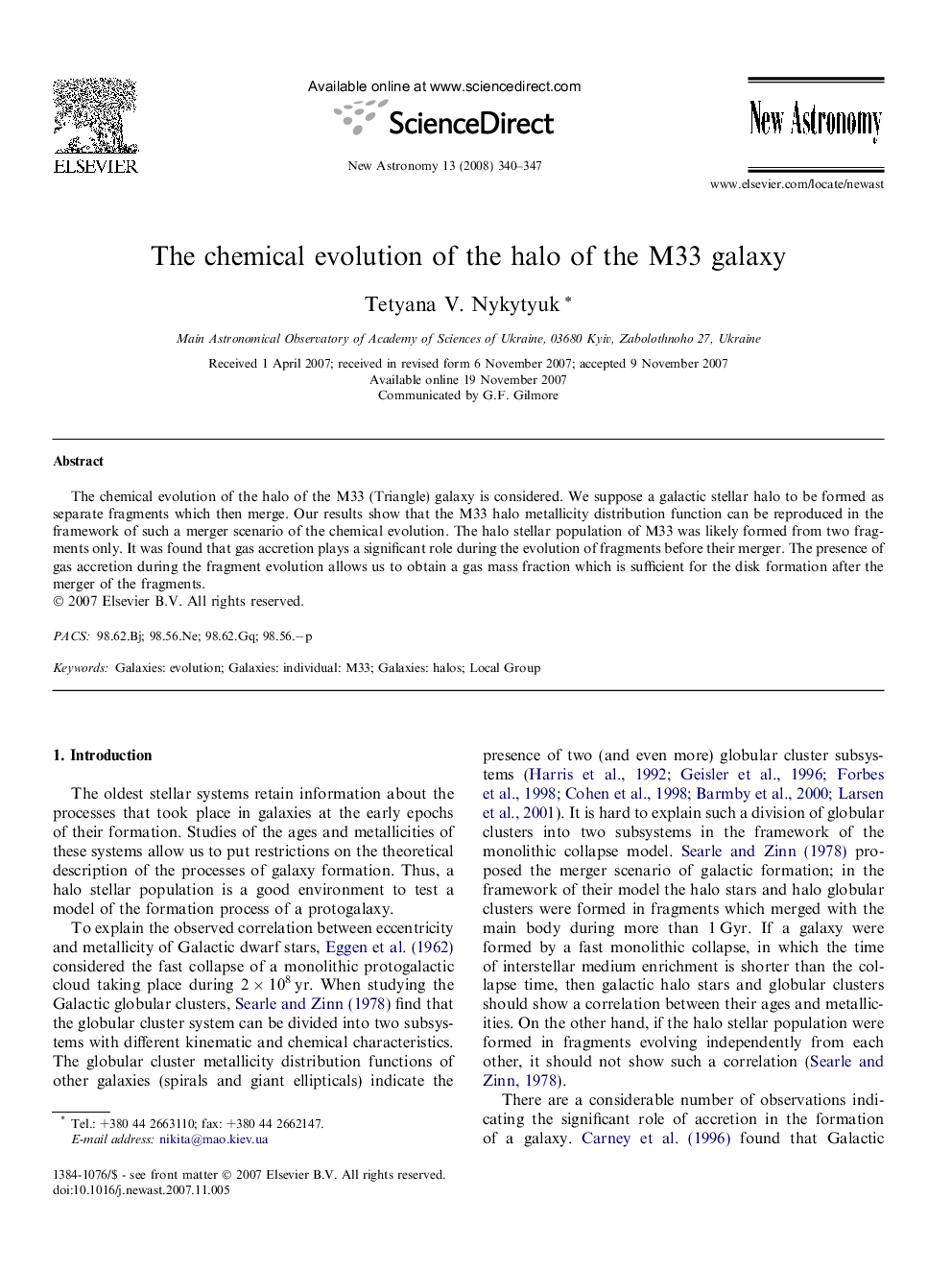| Article ID | Journal | Published Year | Pages | File Type |
|---|---|---|---|---|
| 1779681 | New Astronomy | 2008 | 8 Pages |
Abstract
The chemical evolution of the halo of the M33 (Triangle) galaxy is considered. We suppose a galactic stellar halo to be formed as separate fragments which then merge. Our results show that the M33 halo metallicity distribution function can be reproduced in the framework of such a merger scenario of the chemical evolution. The halo stellar population of M33 was likely formed from two fragments only. It was found that gas accretion plays a significant role during the evolution of fragments before their merger. The presence of gas accretion during the fragment evolution allows us to obtain a gas mass fraction which is sufficient for the disk formation after the merger of the fragments.
Related Topics
Physical Sciences and Engineering
Physics and Astronomy
Astronomy and Astrophysics
Authors
Tetyana V. Nykytyuk,
